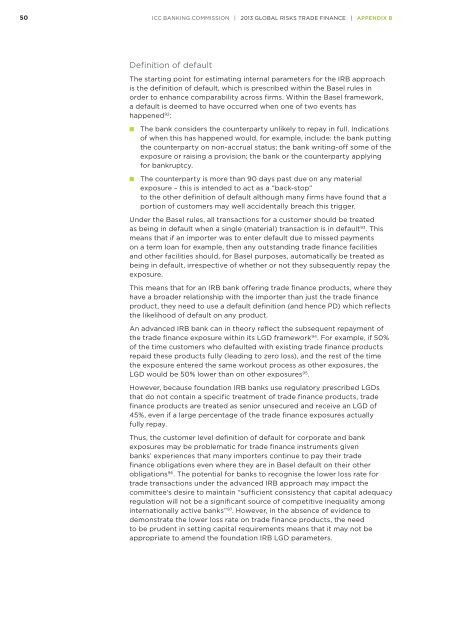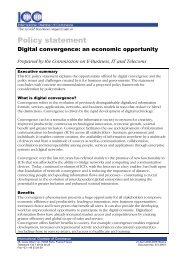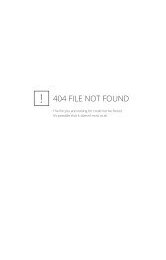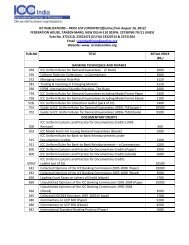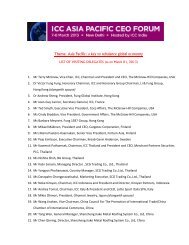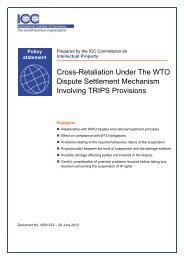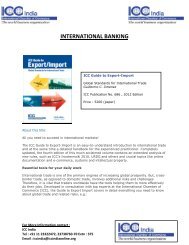2013 - ICC India
2013 - ICC India
2013 - ICC India
- No tags were found...
Create successful ePaper yourself
Turn your PDF publications into a flip-book with our unique Google optimized e-Paper software.
50<strong>ICC</strong> BANKING COMMISSION | <strong>2013</strong> GLOBAL RISKS TRADE FINANCE | APPENDIX BDefinition of defaultThe starting point for estimating internal parameters for the IRB approachis the definition of default, which is prescribed within the Basel rules inorder to enhance comparability across firms. Within the Basel framework,a default is deemed to have occurred when one of two events hashappened 92 :■■■■The bank considers the counterparty unlikely to repay in full. Indicationsof when this has happened would, for example, include: the bank puttingthe counterparty on non-accrual status; the bank writing-off some of theexposure or raising a provision; the bank or the counterparty applyingfor bankruptcy.The counterparty is more than 90 days past due on any materialexposure – this is intended to act as a “back-stop”to the other definition of default although many firms have found that aportion of customers may well accidentally breach this trigger.Under the Basel rules, all transactions for a customer should be treatedas being in default when a single (material) transaction is in default 93 . Thismeans that if an importer was to enter default due to missed paymentson a term loan for example, then any outstanding trade finance facilitiesand other facilities should, for Basel purposes, automatically be treated asbeing in default, irrespective of whether or not they subsequently repay theexposure.This means that for an IRB bank offering trade finance products, where theyhave a broader relationship with the importer than just the trade financeproduct, they need to use a default definition (and hence PD) which reflectsthe likelihood of default on any product.An advanced IRB bank can in theory reflect the subsequent repayment ofthe trade finance exposure within its LGD framework 94 . For example, if 50%of the time customers who defaulted with existing trade finance productsrepaid these products fully (leading to zero loss), and the rest of the timethe exposure entered the same workout process as other exposures, theLGD would be 50% lower than on other exposures 95 .However, because foundation IRB banks use regulatory prescribed LGDsthat do not contain a specific treatment of trade finance products, tradefinance products are treated as senior unsecured and receive an LGD of45%, even if a large percentage of the trade finance exposures actuallyfully repay.Thus, the customer level definition of default for corporate and bankexposures may be problematic for trade finance instruments givenbanks’ experiences that many importers continue to pay their tradefinance obligations even where they are in Basel default on their otherobligations 96 . The potential for banks to recognise the lower loss rate fortrade transactions under the advanced IRB approach may impact thecommittee’s desire to maintain “sufficient consistency that capital adequacyregulation will not be a significant source of competitive inequality amonginternationally active banks” 97 . However, in the absence of evidence todemonstrate the lower loss rate on trade finance products, the needto be prudent in setting capital requirements means that it may not beappropriate to amend the foundation IRB LGD parameters.


